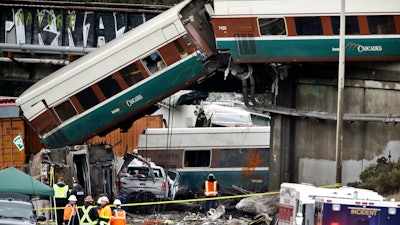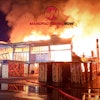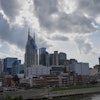
DUPONT, Wash. (AP) — The Amtrak train that careened off an overpass south of Seattle, killing at least three people, was hurtling 50 mph over the speed limit when it jumped the track, federal investigators say (view photos in gallery).
Bella Dinh-Zarr, a National Transportation Safety Board member, said at a Monday night news conference that the data recorder in the rear locomotive showed the train was going 80 mph in a 30 mph zone when it derailed along a curve, spilling railcars onto an interstate highway below.
Dinh-Zarr said it is not yet known what caused the train to derail and too early to say why it was going so fast. She said investigators will talk to the engineer and other crew members. In previous deadly train wrecks, investigators looked at whether the engineer was distracted or disoriented.
The engineer, whose name was not released, was bleeding from the head after the wreck, and both eyes were swollen shut, according to dispatch audio.
The train was making the inaugural run along a fast new bypass route that was created by refurbishing freight tracks alongside Interstate 5. The $180.7 million project was aimed at speeding up service by bypassing an old route that had a number of curves, single-track tunnels and freight traffic.
Positive train control — technology that can automatically slow or stop a speeding train — wasn't in use on this stretch of track, according to Amtrak President Richard Anderson.
Regulators have pressing railroads for years to install such technology, but the deadline has been extended repeatedly at the industry's request and is now the end of 2018.
The 7:34 a.m. accident left mangled train cars up on top of each other, with one hanging precariously over the freeway. The screech and clang of metal was followed by silence, then screams, as the injured cried out to rescuers and motorists pulled over and rushed to help.
Train passenger Emma Shafer found herself at a 45-degree angle, staring at the seats in front of her that had come loose and swung around.
"It felt oddly silent after the actual crashing," she said. "Then there was people screaming because their leg was messed up. ... I don't know if I actually heard the sirens, but they were there. A guy was like, 'Hey, I'm Robert. We'll get you out of here.'"
More than 70 people were injured, 10 of them seriously.
In 2015, an Amtrak train in Philadelphia was traveling at twice the 50 mph speed limit when it ran off the rails along a sharp curve, killing eight people. Investigators concluded the engineer was distracted by reports over the radio of another train getting hit by a rock.
In the latest accident, speed signs were posted 2 miles (3 kilometers) before the speed zone changed ahead of a curve leading to the overpass, according to Kimberly Reason of Sound Transit, the Seattle-area transit agency that owns the tracks.
Eric Corp, a councilman for the small city of DuPont near the derailment, said he rode the train with about 30 or so dignitaries and others on a special trip Friday before the service opened to the public Monday.
"Once we were coming up on that curve, the train slowed down considerably," he said.
The train was not full Monday. Authorities said there were 80 passengers and five on-duty crew members on board.






















